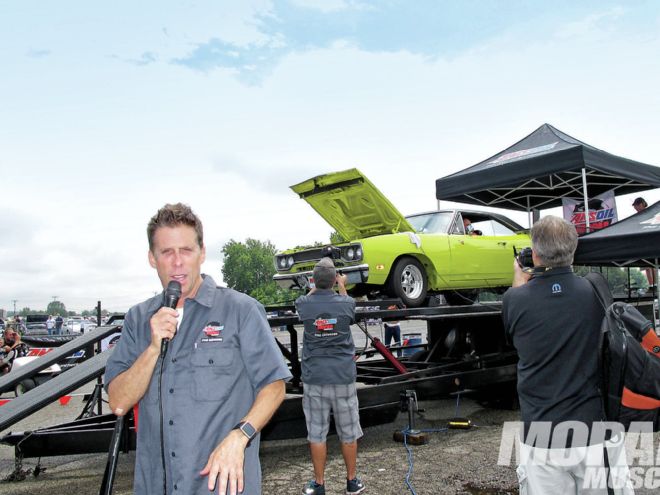
We love our annual trip to the Nationals at National Trail Raceway in Ohio, and for the past two years we’ve had an even bigger reason to look forward to this journey, as we’ve hosted the AMSOIL/Mopar Muscle Dyno Showdown. This year we had Jay at HP Mobile Chassis Dyno meet us at the Mopar Nationals, so we could determine who’s vehicle would make the most power in each of the four classes in our contest.
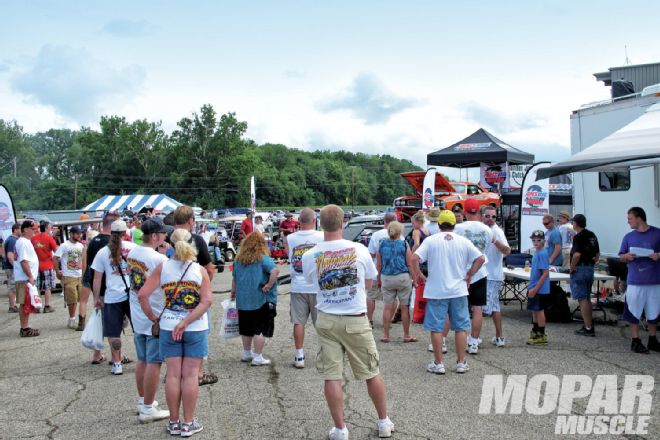 The second annual AMSOIL/Mopar Muscle Dyno Showdown drew quite a crowd at this year’s Nationals, as well as giving proof that when it comes to big power at the wheels, Mopar big-blocks, small-blocks, and Hemis can certainly hold their own.
The second annual AMSOIL/Mopar Muscle Dyno Showdown drew quite a crowd at this year’s Nationals, as well as giving proof that when it comes to big power at the wheels, Mopar big-blocks, small-blocks, and Hemis can certainly hold their own.
When putting the rules together for this year’s chassis dyno contest, we decided that the contest should be open not only to professional engine builders or racers, but also to the average readers of Mopar Muscle as well. For the 2013 Dyno Showdown, we ran two classes for street cars, power adder and non-power adder, and also included two new classes, one for diesel trucks, and an Outlaw class open to race and extreme street vehicles. In the Power Adder, Non-Power Adder, and Outlaw classes, the winner would be determined by the highest horsepower number achieved in either one of the two allotted dyno pulls. In the diesel truck class we used torque to determine the winner, and we were surprised at some of the numbers posted by the Cummins diesel-equipped Dodge trucks.
Anyone with a Mopar is welcome to enter our contest, and the application form is provided both on our website, www.moparmuscle.com, and in the magazine. Once we had the applications in hand, we chose a variety of cars equipped with Mopar big-block, small-block, and Hemi engines. Late-model Mopars are also free to compete, and we had several new Challengers, Vipers, and even a Hemi equipped Ram truck in this year’s contest. In this and the next several issues of Mopar Muscle, we’ll highlight the vehicles that competed in the Showdown in random order, ending with the winners of each of the four categories. We encourage you to follow along, as this contest is a great way to see the power that each combination makes. Also, be sure to enter next year’s dyno competition with your Mopar to get in on the fun, get some free stuff, compete for prizes, and to see your vehicle in the pages of Mopar Muscle magazine.
This is only the first article showing the competitors and their combinations, stay tuned for more in the coming months.
Thomas Pedergnana: 1973 Dodge Charger
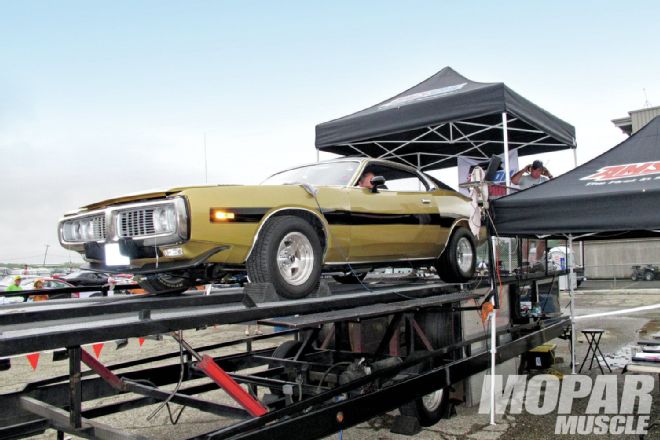
Making the drive from Evergreen Park, Illinois, Thomas Pedergnana brought his small-block powered ’73 Dodge Charger Rallye to our showdown. Equipped with a 408-inch LA based V-8, the normally aspirated engine in his Charger features Mahle pistons, an Eagle crankshaft and rods, and a Comp hydraulic-roller camshaft. Topped with out-of-the-box Edelbrock Performer RPM heads and with 10.3:1 compression, this Charger runs great on pump gas and Thomas says he drives the car everywhere.
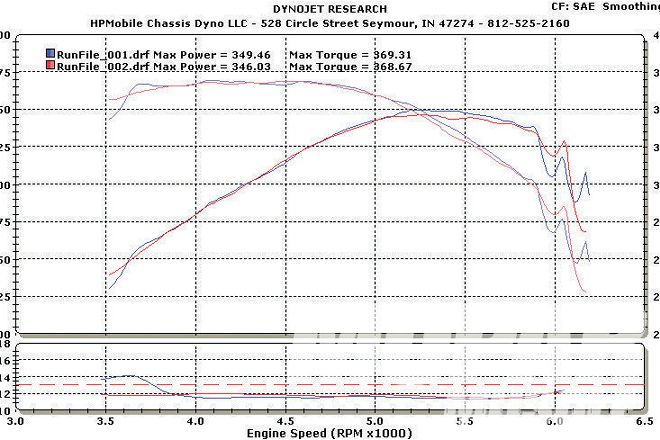
Pushing the power through Hooker headers, 21⁄2-inch exhaust, an 833 four-speed and 3.55 geared 83⁄4 rear, the gold colored Charger has run a best quarter mile time of 14.12 seconds at 104 mph on street tires. On the Dynojet chassis dyno during our contest, Thomas’s Dodge made nearly 350 horsepower at the rear wheels, and torque came in at just under 370 lb-ft. Besides being powerful, we love the fact that this Charger is regularly driven and made the trip to the Mopar Nationals from three states over on its own tires, not on a trailer.
Rob Garrison: 1969 Plymouth Road Runner
As a local from Columbus, Ohio, Rob Garrison drove his ’69 Road Runner to the Mopar Nationals to enter our street class for non-power adder cars, but unfortunately had to limp the car home after encountering a rocker arm problem on the dyno. Rob has owned his Plymouth for more than 11 years, and enjoys driving, showing, and racing his car. The big block in Rob’s car displaces 494-inches, and features Diamond pistons and an Eagle stroker crankshaft. With a hydraulic roller cam and CNC ported Indy aluminum cylinder heads, this combination had the potential for laying down some impressive numbers.
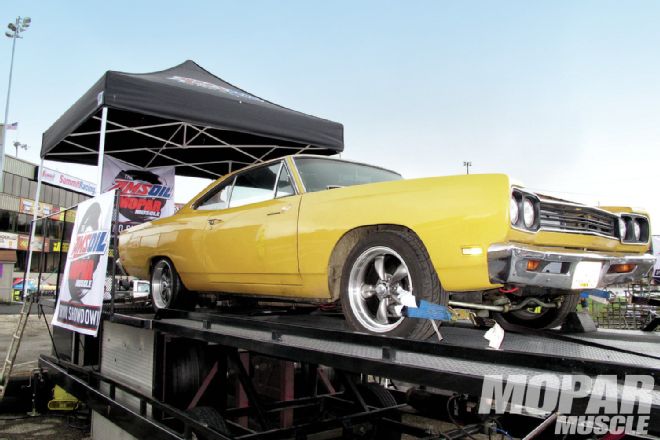
On the dyno, it was apparent that the engine in Rob’s Road Runner wasn’t performing as well as it could. With a Holley 850 carb, Hedman headers, manual transmission, and Indy dual-plane intake, this car should have easily spun the rollers to more than 400 rear wheel horsepower, yet it only made some 376 horsepower on its best pull. After making the two pulls, Rob removed the valve covers and discovered at least two pushrods not actuating the rocker arms. Even so, the Road Runner made it home under its own power and Rob says he’ll be back next year to post some big numbers.
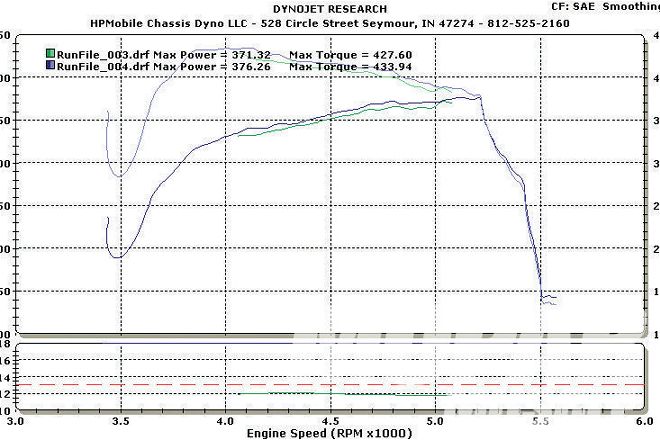
Tom Jefferson: 1967 Plymouth Satellite
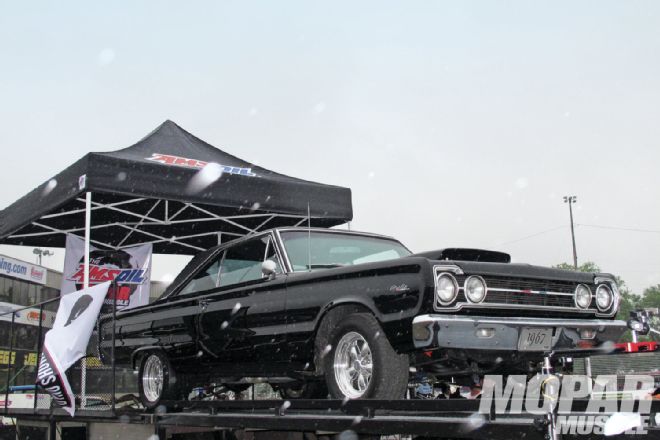
The Jefferson family from Erie, Pennsylvania, was out in force during the 2013 showdown, and Tom Jefferson entered a great looking, black ’67 Satellite in the non-power adder category of our contest. Though Tom’s dyno session was interrupted by rain showers that came through on Friday, he managed to make his two required pulls, and laid down some impressive numbers. Featured in the July, 2004 issue of Mopar Muscle, this Satellite is powered by a 492-inch big-block, based around a Chrysler 400 block. Topped with Edelbrock aluminum cylinder heads, a Six Pack intake, and trio of Holley two-barrel carbs, Tom estimated horsepower at over 400 at the rear wheels.
With an automatic transmission, 3,000 rpm converter, and Richmond 3.91gears, the big-block in this Plymouth features coated headers, and tti mufflers and exhaust. Claiming a best quarter mile time of 13 seconds flat, Tom’s Satellite posted a best dyno pull of more than 376 horsepower on its best pull. For a show car that is regularly driven, this Satellite is a good looking example of a Mopar B-Body. Unfortunately, we were unable to get a dyno graph for Tom’s run.
We’d like to thank the sponsors and all of the competitors in our second annual AMSOIL/Mopar Muscle Dyno Showdown, and look forward to bringing you all of this year’s results in future issues of Mopar Muscle magazine. This contest is also a work in progress, so we’d like input from our readers as to any rules changes, additional classes, or coverage that they’d like to see in next year’s event. Remember, Mopar Muscle is your magazine, and the events we host and sponsor are your events, so be sure to let us know what you think.
We plan to make applying for the contest even easier for next year, and instead of downloading an application you will be able to apply directly through email or our website. Additionally, look for some rule changes that will allow a wider variety of powerful Mopars to enter our contest. We really enjoyed seeing everyone at the Mopar Nationals this year, and hope to see you at the Nats and other events we attend next year.
John Bretz: 2010 Dodge Challenger R/T
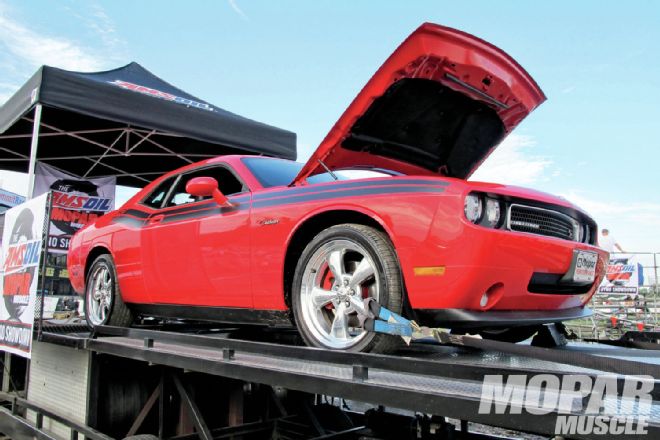
Running in our Non-Power Adder class, John Bretz brought his nearly stock 2010 Dodge Challenger R/T to compete with the field of mostly classic Mopars. As a retired iron worker, John purchased this car as a daily driver, and enjoys the power and performance of his late-model 5.7 Hemi equipped Dodge. The only modifications to John’s Challenger are a cold air intake system, and Cat-rearward aftermarket exhaust.
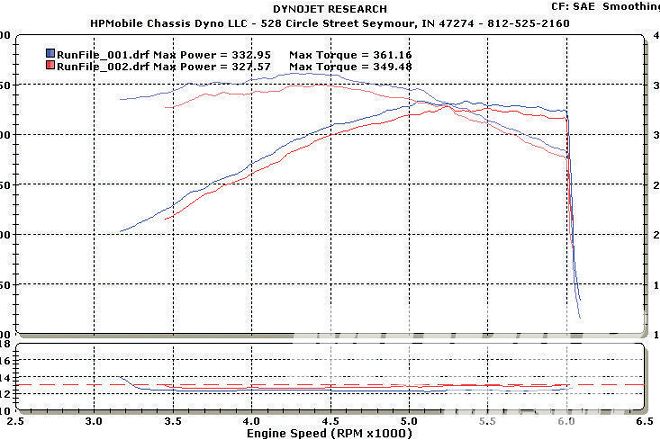
As a late-model Mopar with only 18,000 miles, we thought it would be fun to see how the Hemi in this Dodge compared to the engines in the classic Mopars in our contest. On the HP Mobile chassis dyno, this basically-stock Challenger R/T spun the rollers to the tune of 332 horsepower and 361 lb-ft of torque.
Garret Struck: 1995 Dodge Ram 2500
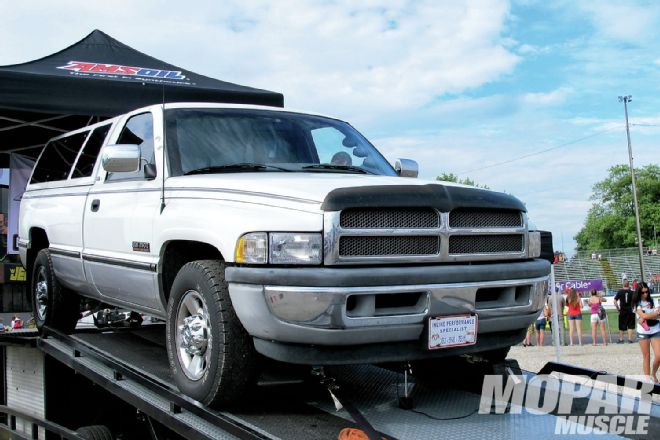
Ram trucks are known for their towing capacity, and many of the cars brought to the Mopar Nationals this year arrived on trailers pulled by Cummins diesel-powered Dodge trucks. Garret Struck of Webster, Florida, uses his truck as a daily driver, and to tow his ’72 Duster drag car to the races. Garret has modified his truck with a Goerend torque converter, rebuilt automatic transmission, and electronic tuner. Otherwise, this 12-valve Cummins is stock.
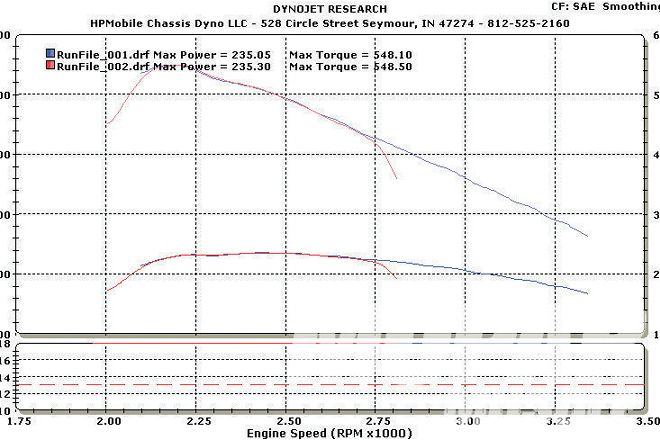
Entered in the Diesel class, Garret’s truck would be judged based on the highest torque number of the two pulls it would make on the dyno. Strapped to the Dynojet dyno, this ’95 Dodge Ram made a stout 548 lb-ft of torque on its best dyno pull. With more than 300,000 miles on the odometer, this truck is regularly used, and was the highest mileage vehicle in our competition.
Lance Baldwin: 1970 Dodge Challenger R/T
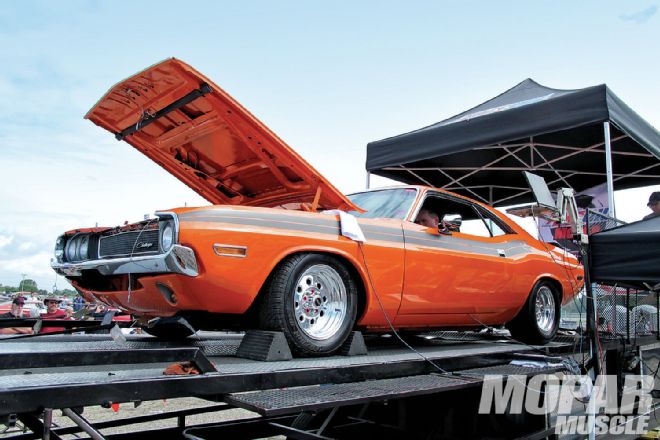
Lance Baldwin’s ’70 Challenger R/T has been in his family for more than 30 years, and when it was passed along to Lance, he spent the better part of three years transforming it into the car seen here. Lance did most of the work himself, along with some help from family members, including building the 505-inch Wedge that powers this Challenger. Inside the 505-inch big-block, Lance installed an Eagle forged crankshaft, Eagle rods, Icon forged pistons, and a hydraulic flat-tappet camshaft from Comp Cams. Topped with Edelbrock Performer RPM cylinder heads that he ported and polished himself, this engine sports an Edelbrock Performer intake manifold and 800-cfm Mighty Demon four-barrel carburetor.
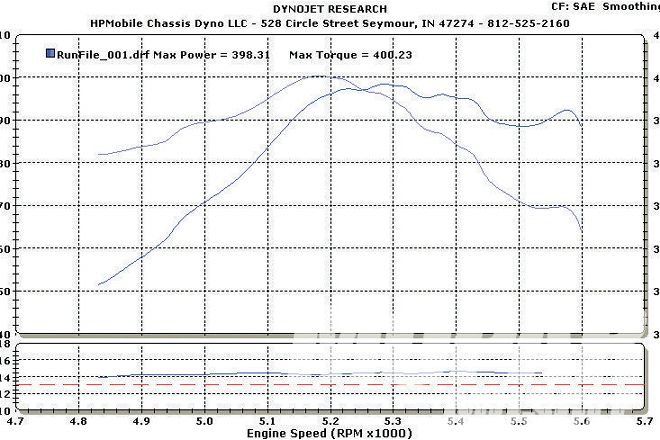
TTI headers and 3-inch exhaust expel the gasses, and power is transferred to the rear wheels through a 727 TorqueFlite with TCI internals and a 3,500 rpm TCI stall converter. With a best elapsed time of 12.08 seconds in the quarter mile, Lance’s Challenger is both good-looking and quick, which should be expected since he is an automotive technician by trade. On the chassis dyno, this Challenger made nearly 400 rear horsepower with peak power occurring under 5,500 rpm. Torque was more than 400 lb-ft, ensuring this car is a fun ride.
Dave Raver: 1970 Plymouth GTX
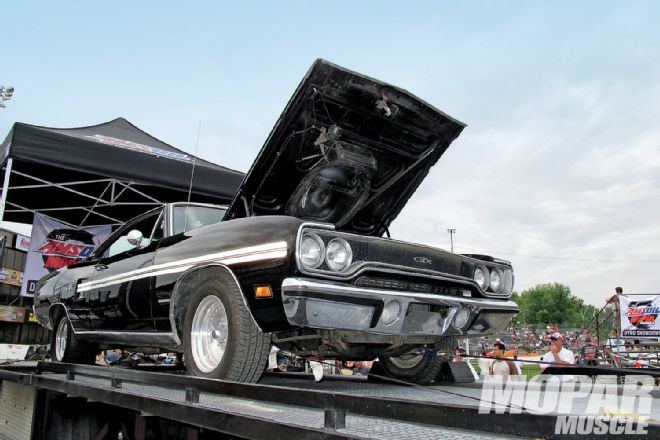
Dave’s ’70 GTX is a great-looking B-Body, finished in stunning black paint with white accents. Having owned the car for more than 20 years, the restoration was accomplished just two years after Dave found and purchased the GTX in 1992. Dave restored the interior himself, and built the 440 back to stock specs with the addition of a .510 lift hydraulic cam, Edelbrock aluminum cylinder heads, an Edelbrock intake and Demon four-barrel carburetor that sucks air through an Air-Grabber hood. The exhaust includes headers, 21⁄2-inch pipes, and stock mufflers, which dump into 2-inch tailpipes.
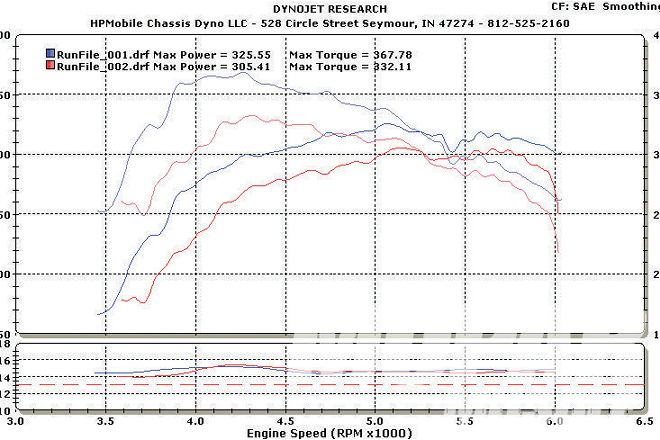
Shifting through a manual transmission with a Hurst shifter and high-performance clutch, power then goes to the rear wheels via an 83⁄4 equipped with 3.91 gears. Spinning the rollers on the chassis dyno, Dave’s GTX made a best pull of 367 lb-ft of torque, and over 325 horsepower at the rear wheels. These are good numbers for a 440-inch engine, and we thank Dave for entering our dyno competition.
Chuck Lee: 1971 Dodge Dart Swinger
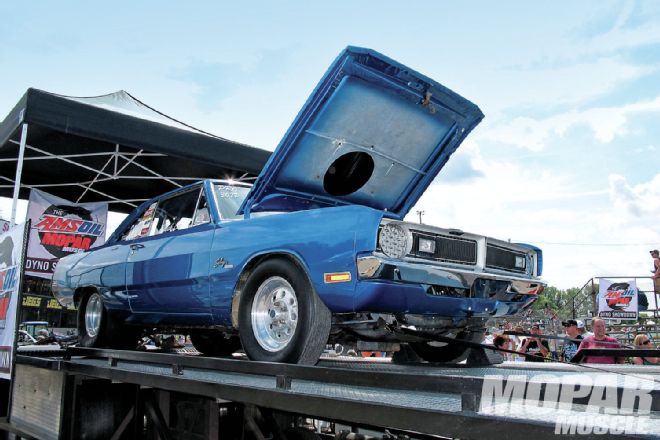
Entered in the Outlaw class, Chuck Lee’s ’71 Dart Swinger is a dedicated race car, and was competing at the Mopar Nationals this year. As a farmer residing in nearby Shade, Ohio, Chuck races his Dart regularly along with his son Chad who has a ’67 Dart of his own. Chuck built the .030-inch over 340 himself, using a NASCAR crankshaft, 12.0:1 forged pistons, a Comp cam, and “J” heads with 2.08-inch intake valves. Double valve springs and roller rockers actuate the valves, and the small-block is fed by an Edelbrock intake and Holley 750 double-pumper carb.
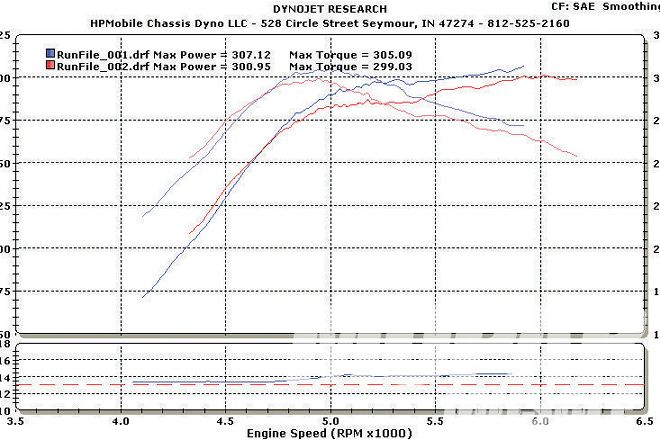
The 727 is shifted by a Cheetah shifter, and stall speed is 4,200 rpm with an 8-inch converter. Moser axles and 4.86 gears get the power to the track, where the Dart has run a best of 11.7 seconds at 111 mph. On the dyno, big racing tires and a loose converter definitely don’t help the rear-wheel horsepower numbers, but the small-block Dart still managed to make 305 lb-ft of torque and more than 307 horsepower.